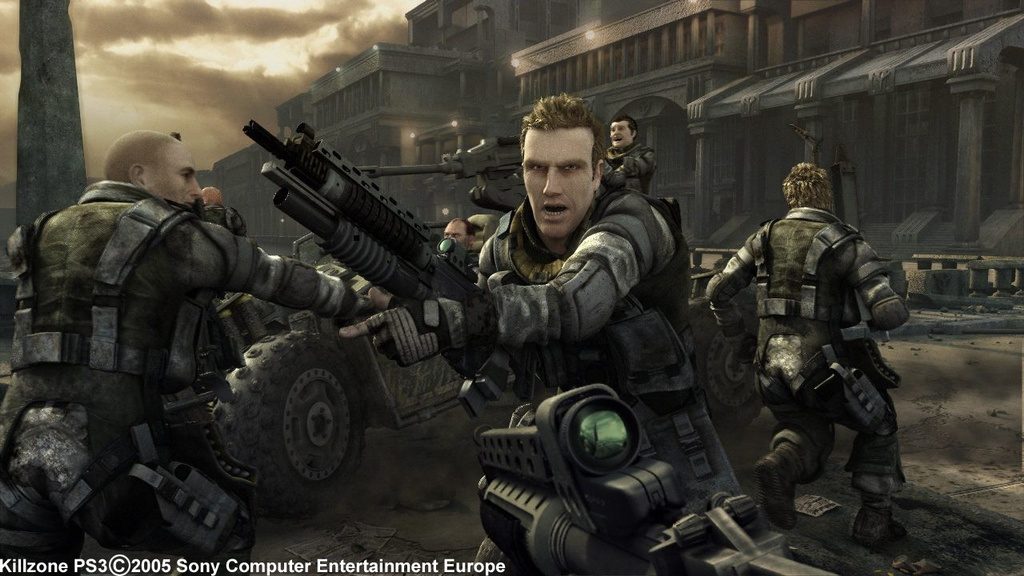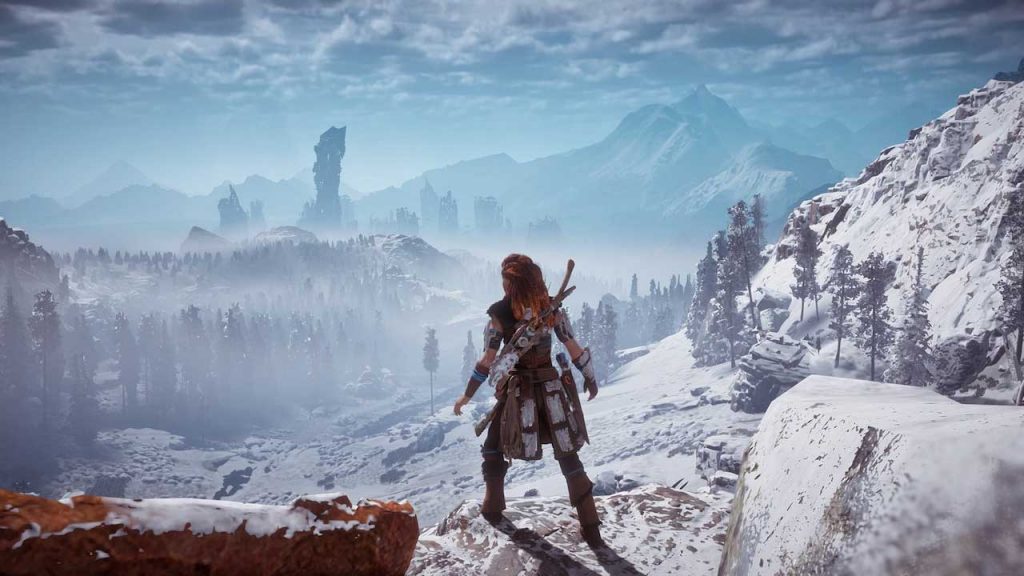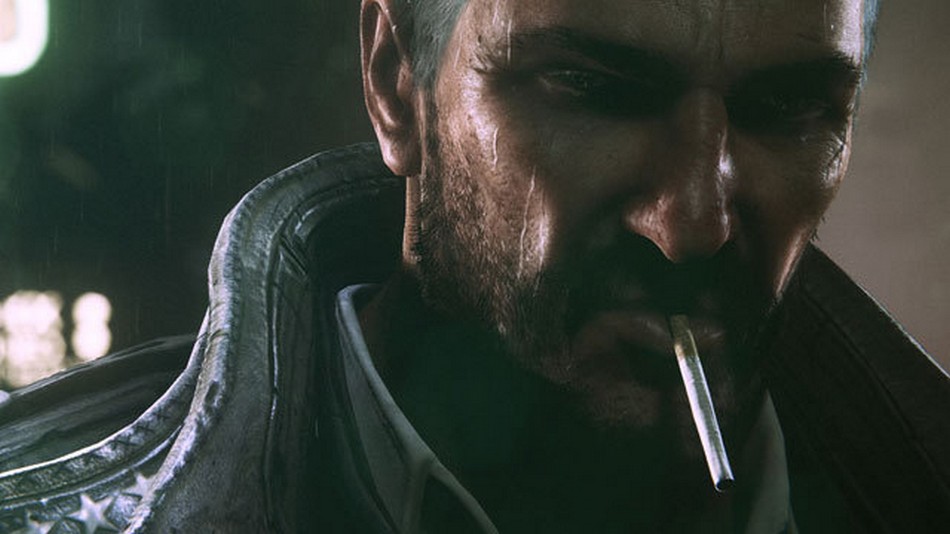
Remember all the hype around the PS3? I remember that one guy in middle school whose parents shelled out $600 for an OG 40 GB PS3. Those were simpler days, with Metroid Prime: Hunters or Goldeneye matches on DS during lunch, back when Battlefront wasn’t riddled with microtransactions. But man, those PS3 trailers–even with all the buffering–they were really something.
Motorstorm? Best racing game ever. Heavenly Sword? Some kind of Dynasty Warriors 4 fever dream. But there was one trailer we’d keep going back, years after it was first shown: That infamous Killzone 2 trailer was, for better or for worse, what really imprinted “next gen” into everyone’s collective, 6th grade conscience. It took a few more years (and actually getting my hands on a PS3) to realize something wasn’t right. Killzone 2’s “target render” E3 trailer, shown in 2005, was the grand-dad of all “downgrade” debacles. Yeah, it really was worse than The Witcher 3. And sadly, despite the fact that Killzone 2 was something of a stunner at launch, its technical prowess has always been in the shadow of that absurdly wishful trailer.
"Killzone 2’s “target render” E3 trailer, shown in 2005, was the grand-dad of all “downgrade” debacles. Yeah, it really was worse than The Witcher 3. And sadly, despite the fact that Killzone 2 was something of a stunner at launch, its technical prowess has always been in the shadow of that absurdly wishful trailer."
But tech never stands still. Incredibly, it’s been nearly 13 years since E3 2005. The average smartphone today can give the PS3 a run for its money (when it’s not thermal throttling, that is), and with speculation building about the arrival of 9th gen consoles in a years’ time, we thought it’d be a good idea to go back to that infamous trailer and see what kind of a platform you’d need to run 2005’s very best. In order to do so, we are going to establish two things: 1. How current-gen games are already surpassing the effects we saw in the Killzone 2 E3 2005 trailer and 2. the potential specs required for the next PlayStation to not only reach this target but to go above and beyond it. While the conversation’s heating up about the ninth-gen, going back to the trailer, we were pleasantly surprised with just how many of the techniques employed have already seen use this gen on the PS4 and Xbox One. It recalls the Samaritan trailer from 2011–what seemed at first to be a hopelessly optimistic prediction for the third gen turned out to be a template for none other than Arkham Knight–a title that, as Digital Foundry showed, replicated not just the atmosphere of the Samaritan demo, but also much of the core tech, all running at 1080p on the PS4.
From that angle, Killzone 2’s E3 trailer is a much easier milestone to reach, and many 8th gen titles, not least of all, Killzone: Shadowfall, have surpassed it in a variety of ways. Let’s see how.
Right from the get go, the Killzone 2 E3 trailer makes extensive use of what are evidently volumetric clouds. Early FPS titles often just painted a cloud texture onto the skybox. This was done because rendering 3D clouds was simply not a good use of (limited) console resources, considering that the player’s perspective of the skybox doesn’t change much. Early flight simulators–which were games that actually required the player to get up close to clouds, often used a billboarding approach, with clouds rendered as sprites that’d rotate with your angle of approach. It wasn’t until 2007 that real, 3D, particle-based volumes of cloud came to be used in games.
"Take Horizon: Zero Dawn, for instance. It’s custom implementation of TressFX that allows for individual strands and clumps of hair to react to wind or movement."
Today, however, everything from Horizon: Zero Dawn to Minecraft utilizes volumetric particle rendering. Plenty of modern titles including Shadowfall, the PS4 outing of the Killzone series go a step further by incorporating that can emit and receive light from dynamic sources. Back in 2005, those volumetric expanses of cloud weren’t lit at all by explosions such as the one at the 23-second mark. A large number of today’s games do clouds a lot better.
What about character hair rendering, then? Compared to the “hair helmets” or bald pates found in just about every game from the period, those animated locks about 15 seconds into the trailer are revelatory. Yet, again, hardware constraints meant that hair meshes remained static throughout the seventh gen, even in graphically intensive titles like the Uncharted series. While Nvidia’s Hairworks largely remains a performance-sapping gimmick confined to PC, AMD’s platform-agnostic TressFX middleware has seen deployment in quite a few 8th-gen console titles with a good measure of success.
Take Horizon: Zero Dawn, for instance. It’s custom implementation of TressFX that allows for individual strands and clumps of hair to react to wind or movement. TressFX also sees good use in Deus Ex: Mankind Divided. Some developers like Bethesda have chosen to implement their own in-house solutions, as seen in Fallout 4, to various degrees of success. Still, hair rendering in today’s typical AAA game is leaps and bounds over what’s seen in the trailer.
Killzone 2 was ahead of its time in using a deferred renderer, which allowed for a large number of dynamic lights onscreen at a time. This is seen in the firefight at around 1:08, where soldiers who are lit on fire act as (temporarily) mobile light sources. This is in conttrast to the majority of 7th gen titles which utilized forward rendering. Over the years, however, deferred rendering has become the approach of choice: everything from Assassin’s Creed to Dark Souls uses a deferred renderer to allow for dramatic plays of light and shadow. Furthermore, ambient occlusion is wholly absent. This leads to the railing at 1:35 taking on a flat appearance. Today, a variety of AO technique scale across different performance targets, and all of them enhance the quality of indirect lighting. Being relatively inexpensive, SSAO is utilized to great effect, even in other 7th gen titles like Last of Us.
"While the conversation’s heating up about the ninth-gen, going back to the trailer, we were pleasantly surprised with just how many of the techniques employed have already seen use this gen on the PS4 and Xbox One. It recalls the Samaritan trailer from 2011–what seemed at first to be a hopelessly optimistic prediction for the third gen turned out to be a template for none other than Arkham Knight–a title that, as Digital Foundry showed, replicated not just the atmosphere of the Samaritan demo, but also much of the core tech, all running at 1080p on the PS4."
Lastly, the E3 trailer falls flat by current standards in terms of both mesh complexity and texture detail. The use of low-res texture assets is evident at 1:33, both in the foreground–the armour, and the background road. While the actual game also suffers from muddy textures on account of the PS3’s paltry 256 MB of VRAM, ugly textures rear their heads in the E3 trailer as well. With the gradual mainstreaming of 4K displays which have 9 times (yikes!) the pixel count of Killzone 2’s 720p output, and thanks to the prodigous amounts of VRAM onboard the consoles, especially the One X, texture work in today’s games is orders of magnitude finer than what’s seen in the trailer. Moreover, mesh complexity has improved by orders of magnitude.
Killzone 3, the successor to Killzone 2, has models with 10,000 polys. Killzone: Shadowfall, its immediate succesor, has 4 times as many per character. The unsurprising consequence of these is that most modern games are multiple times the size of their seventh-gen predecessors. Plenty of games these days exceed 50 GB in size. 80-120 GB HDDs were the norm in 2005. Nuff said.
A key lesson to note here is that, no matter how far ahead of its time a tech demo may appear, sooner or later, you will see ordinary games that far surpass it. In today’s world, that E3 tech demo is really nothing special. Today’s titles leverage a variety of new techniques: realistic skin shading utilizing subsurface scattering, physically-based rendering which allows materials like metal and wood to reflect light accurately, global illumination, and photogrammetry which literally allows us to scan in real-world objects, the list goes on.
What’s truly interesting is the crop of *actually* photorealistic tech demos on UE4 that’ve turned up over the past couple of years: Fancy Parisian apartments that seem to have finally crossed over to the other side of the uncanny valley. Remarkably, these seem to be working on GTX 1080-class hardware. With the rumour mill increasingly talking about a 2019/2020 launch for the PS5 and next Xbox, we wonder if visuals of this kind might feature in games next-gen, even if only in walking simulators or other narrowly-confined, linear experiences.
"Even in the PC space, Ryzen can’t easily manage clockspeeds above 4 GHz and there is, of course, the power and cost budgets to worry about. In terms of memory, we’re in an interesting position right now: in a few months’ time, Hynix will start mass manufacturing GDDR6 in 8 and 16 GB capacities."
What kind of hardware will most likely make this happen (to not only reach this target but to go above and beyond what we saw in that famous E3 2005 trailer) ? A potential 2019 ninth-gen console will likely utilize the Vega architecture. If a die shrink to 7nm has not yet taken place, the best we can expect on the 16nm process (on which the PS4 Pro and Xbox One X’s SoCs are made), is a circa-8 TFLOP GPU, with 48-56 compute units, and running in the 12-1300 MHz range. On the CPU side of things, an 8-core Ryzen part clock between 1.5-2 GHz is likely.
Even in the PC space, Ryzen can’t easily manage clockspeeds above 4 GHz and there is, of course, the power and cost budgets to worry about. In terms of memory, we’re in an interesting position right now: in a few months’ time, Hynix will start mass manufacturing GDDR6 in 8 and 16 GB capacities. While HBM2 still offers marginally greater bandwidth, the prohibitive costs make GDDR6 a much better fit, and considering that the consoles have a shared pool of memory, 16 GB would be enough to ensure that the GPU is allocated at least 10 GB of VRAM, crucial for handling high-res textures at 4K.
While Killzone 2’s trailer may well have been far beyond the capabilities of the PS3, it’s important to remember that time never stands still in the tech industry. 13 years is a long time. While those visuals were certainly not possible on PS3, it’s evident that just about every AAA title today looks better. And with the onset of the 9th gen, who knows what’ll be next?
















